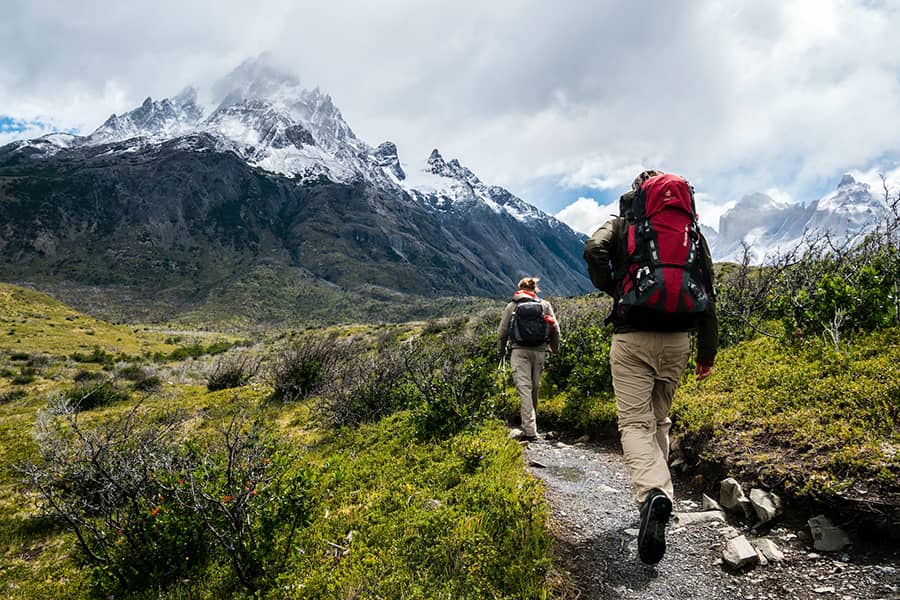
Best Hiking Trails for Nature Lovers
April 20, 2023
Are you a nature lover seeking adventure and a way to connect with the great outdoors? If so, hiking is the perfect activity for you! Hiking allows you to explore the beauty of nature, challenge yourself physically, and experience breathtaking landscapes. In this article, we will discuss the best hiking trails around the world that are a dream come true for nature lovers.
Table of Contents
Importance of Hiking
Hiking is not just a physical activity; it offers numerous benefits for both the body and mind. It provides an opportunity to exercise in the fresh air, soak in the beauty of nature, and relieve stress. Hiking also promotes mental well-being, boosts mood, and increases mindfulness. It allows you to disconnect from the hustle and bustle of daily life and connect with the serenity of nature.
Popular Hiking Trails
If you are a seasoned hiker or a beginner looking for some amazing trails to explore, here are some of the most popular hiking trails around the world that are worth considering:
Trail 1: Appalachian Trail
The Appalachian Trail is a legendary hiking trail that spans over 2,200 miles through 14 states in the United States. It offers awe-inspiring vistas, diverse landscapes, and a unique cultural experience. The trail takes you through lush forests, rugged mountains, and picturesque valleys, offering a challenging yet rewarding adventure for nature lovers.
Trail 2: Pacific Crest Trail
The Pacific Crest Trail is another iconic hiking trail that stretches over 2,600 miles from Mexico to Canada, traversing through three states in the United States. It offers stunning views of the Sierra Nevada and Cascade mountain ranges, as well as the Mojave and Sonoran deserts. This trail is famous for its challenging terrain, pristine wilderness, and breathtaking scenery.
Trail 3: Camino de Santiago
The Camino de Santiago, also known as the Way of St. James, is a network of ancient pilgrimage routes that converge at the Cathedral of Santiago de Compostela in Spain. It offers a unique cultural and spiritual experience, with beautiful landscapes, historic towns, and picturesque villages along the way. This trail is not only a physical challenge but also a journey of self-discovery and personal growth.
Trail 4: Inca Trail
The Inca Trail is a world-famous hiking trail that leads to the majestic Machu Picchu in Peru. It is a challenging and rewarding adventure that takes you through diverse landscapes, from high mountains to lush cloud forests. Along the way, you will encounter ancient Inca ruins, breathtaking panoramas, and a glimpse into the rich history and culture of the Incas.
Trail 5: Mount Kilimanjaro
For those seeking a unique hiking experience, Mount Kilimanjaro in Tanzania is a bucket-list destination. It is the tallest peak in Africa and offers an incredible adventure with stunning views of the African savannah, dense rainforests, and snow-capped peaks. Climbing Mount Kilimanjaro requires physical endurance and proper acclimatization, but the reward of standing on the “Roof of Africa” is unparalleled.
Lesser-known Hiking Trails
While popular hiking trails offer breathtaking experiences, there are also lesser-known trails that are hidden gems waiting to be explored. Here are some off-the-beaten-path trails that nature lovers should consider:
Trail 6: Jordan Trail
The Jordan Trail is a long-distance hiking trail that stretches over 650 kilometers from the northern forests of Um Qais to the red sands of the Wadi Rum desert in Jordan. It offers a diverse landscape of ancient ruins, stunning valleys, deep canyons, and traditional Bedouin villages. This trail provides a unique cultural experience, allowing hikers to immerse themselves in the rich history and hospitality of Jordan.
Trail 7: Laugavegur Trail
Located in Iceland, the Laugavegur Trail is a mesmerizing hiking trail that takes you through geothermal hot springs, colorful mountains, lava fields, and glacial valleys. The trail is known for its otherworldly landscapes, including the famous Landmannalaugar area with its rainbow-colored rhyolite mountains. Hiking the Laugavegur Trail is like stepping into a surreal wonderland that is unlike anything you’ve ever seen before.
Trail 8: The Long Range Traverse
Nestled in Newfoundland, Canada, the Long Range Traverse is a challenging and remote hiking trail that offers pristine wilderness and breathtaking vistas. This trail takes you through the rugged Long Range Mountains, crossing barren tundra, dense forests, and sparkling lakes. It requires advanced hiking skills, navigation, and wilderness camping, but the solitude and serenity of this untouched landscape are well worth it for nature lovers seeking an unforgettable adventure.
Trail 9: Kumano Kodo
Kumano Kodo is a network of ancient pilgrimage trails in Japan that have been walked for centuries by pilgrims seeking spiritual enlightenment. It offers a cultural and natural journey, passing through dense forests, peaceful shrines, and picturesque villages. The trail is known for its spiritual significance, stunning scenery, and traditional Japanese hospitality, providing a unique experience for nature lovers looking for a deeper connection with nature and culture.
Trail 10: Kalalau Trail
Located in Hawaii, the Kalalau Trail is a challenging and remote hiking trail that takes you along the rugged Na Pali Coastline. It offers breathtaking views of towering cliffs, pristine beaches, and lush valleys, with the turquoise waters of the Pacific Ocean as your constant companion. This trail requires permits and advanced hiking skills, but the reward of reaching the secluded Kalalau Beach is worth the effort for nature lovers seeking an unparalleled tropical hiking experience.
Tips for Hiking
Hiking can be a challenging and rewarding adventure, but it’s important to plan and prepare to ensure a safe and enjoyable experience. Here are some tips for hiking:
Plan and Prepare
- Research and choose the hiking trail that matches your skill level and interests.
- Check the weather forecast and trail conditions before heading out.
- Make sure to have a detailed map, compass, and GPS for navigation.
- Inform someone about your hiking plans, including your itinerary and estimated return time.
- Pack enough food, water, first aid kit, appropriate clothing, and other essential gear for the trail.
Stay Safe
- Follow all safety guidelines and regulations of the hiking trail and park.
- Stay on marked trails and avoid taking shortcuts or straying off the designated path.
- Be aware of wildlife and respect their natural habitat. Do not feed or approach them.
- Stay hydrated and take breaks as needed to avoid exhaustion or dehydration.
- Carry a whistle, flashlight, and other safety devices in case of emergencies.
Leave No Trace
- Practice Leave No Trace principles by packing out all trash and litter.
- Respect the environment by not disturbing plants, wildlife, or cultural artifacts.
- Stay on established trails and avoid damaging vegetation or disturbing wildlife habitats.
- Minimize campfire impacts and follow fire regulations in designated areas.
Be Prepared for Emergencies
- Know the location of the nearest emergency services and contact information.
- Carry a first aid kit and know how to use it.
- Have a backup plan and know the evacuation routes in case of emergencies.
- Stay calm and follow safety protocols in case of unexpected situations.
Choose the Right Gear
As a nature lover embarking on a hiking escapade, it’s essential to have the right gear to ensure a safe and enjoyable experience. Here are some tips on how to choose the right gear for your hiking adventure.
Footwear
When it comes to hiking, appropriate footwear is crucial. Invest in a pair of hiking boots or shoes that provide good ankle support, have a sturdy sole for traction, and are waterproof to keep your feet dry in wet conditions. Make sure they fit well and are comfortable for long hikes.
Clothing
The right clothing can make a significant difference in your comfort during a hike. Opt for moisture-wicking and quick-drying fabrics that keep you dry and warm, such as synthetic or merino wool. Dress in layers, so you can easily adjust to changing weather conditions. Don’t forget a waterproof jacket, hat, and gloves for protection against rain, wind, and cold temperatures.
Backpack
A good backpack is essential for carrying all your gear and supplies during a hike. Look for a backpack with a comfortable and adjustable fit, padded shoulder straps, and multiple compartments for organized packing. Consider the size and capacity of the backpack, depending on the duration and difficulty of your hike.
Navigation Tools
Navigation tools are crucial for staying on track during a hike. Carry a map and compass, and know how to use them. Consider a GPS device or smartphone with offline maps as a backup. Make sure to also carry extra batteries or a power bank to keep your devices charged.
Food and Water
Staying properly fueled and hydrated is essential during a hike. Pack lightweight and non-perishable foods that are high in energy, such as nuts, dried fruits, and energy bars. Carry enough water to last the duration of your hike, and consider a water filtration system or purification tablets for refilling water from natural sources.
First Aid Kit
A well-stocked first aid kit is a must-have for any hiking adventure. Include bandages, gauze, adhesive tape, antiseptic wipes, insect repellent, sunscreen, and any necessary personal medications. Familiarize yourself with basic first aid procedures and know how to use the items in your kit.
Other Essentials
In addition to the gear mentioned above, there are other essentials to consider for your hiking adventure. These may include a headlamp or flashlight, a multi-tool, a fire starter, a whistle for signaling, insect repellent, sunglasses, and a hat for sun protection. Make a checklist and ensure you have all the necessary gear before hitting the trail.
Conclusion
Choosing the right gear is crucial for a successful and safe hiking escapade. Proper footwear, clothing, backpack, navigation tools, food and water, first aid kit, and other essentials can greatly enhance your hiking experience. Be prepared and invest in high-quality gear that fits your needs and the trail requirements. With the right gear in tow, you’ll be well-equipped to enjoy the beauty of nature on your hiking adventure.
FAQs (Frequently Asked Questions)
- Q: What type of footwear is best for hiking?
A: Invest in hiking boots or shoes that provide good ankle support, have a sturdy sole for traction, and are waterproof to keep your feet dry in wet conditions. - Q: What should I pack in my first aid kit for hiking?
A: A well-stocked first aid kit for hiking should include bandages, gauze, adhesive tape, antiseptic wipes, insect repellent, sunscreen, and any necessary personal medications. - Q: How much water should I carry for a hiking trip?
A: It is recommended to carry at least 2 liters of water per person per day, but this may vary depending on the weather, duration, and intensity of your hike. Be sure to plan and pack enough water accordingly. - Q: Do I need a map and compass for hiking if I have a GPS?
A: While a GPS can be helpful, it’s still important to carry a map and compass as a backup in case of technology failures or low battery. Map and compass skills are also valuable for navigating in wilderness areas where GPS signals may not be reliable. - Q: What type of clothing is best for hiking?
A: Opt for moisture-wicking and quick-drying fabrics that keep you dry and warm, such as synthetic or merino wool. Dress in layers, so you can easily adjust to changing weather conditions. Don’t forget a waterproof jacket, hat, and gloves for protection against rain, wind, and cold temperatures.
Remember to research and consider the specific requirements of your hiking destination, weather conditions, and duration of your trip when choosing your gear. Always prioritize safety and comfort, and be prepared for the unexpected. Happy hiking!
Conclusion
Hiking is a thrilling adventure that allows nature lovers to immerse themselves in the beauty and serenity of the great outdoors. From popular trails with iconic landmarks to lesser-known paths that offer unique experiences, there is a hiking trail for every nature enthusiast. By planning, preparing, and following safety guidelines, you can embark on an unforgettable hiking escapade and create cherished memories that will last a lifetime.
FAQs (Frequently Asked Questions)
- Q: What should I pack for a hiking trip?
A: It’s important to pack essential items such as food, water, appropriate clothing, navigation tools, and a first aid kit. Research and follow the packing list recommended for the specific trail you’re hiking. - Q: How can I stay safe while hiking?
A: Follow all safety guidelines and regulations of the hiking trail and park. Stay on marked trails, carry a whistle and flashlight, be aware of wildlife, and stay hydrated. Plan ahead and be prepared for emergencies. - Q: What are Leave No Trace principles?
A: Leave No Trace is a set of guidelines that promote environmental conservation and preservation. It involves packing out all trash and litter, avoiding damage to vegetation and wildlife habitats, and respecting cultural artifacts. - Q: What should I do in case of emergencies while hiking?
A: Know the location of the nearest emergency services, carry a first aid kit, and have a backup plan in case of emergencies. Stay calm and follow safety protocols in case of unexpected situations.
See also: Ultimate Guide to Booking Cheap Flights: Save Big on Airfare
Recent Posts
What to Expect After You Apply: The Section 8 Waiting List
September 29, 2025
SSDI Back Pay: How Much Can You Receive and When?
September 29, 2025
How to Apply for Section 8 Housing in 2025 – Complete
September 27, 2025
How to Qualify for SNAP Benefits in 2025: The Complete Guide
September 27, 2025
Supplements That Help With Memory Loss in Seniors
August 10, 2025
SUBSCRIBE TO OUR NEWSLETTERS
Subscribe our newsletter for latest news, questions. Let's stay updated!





